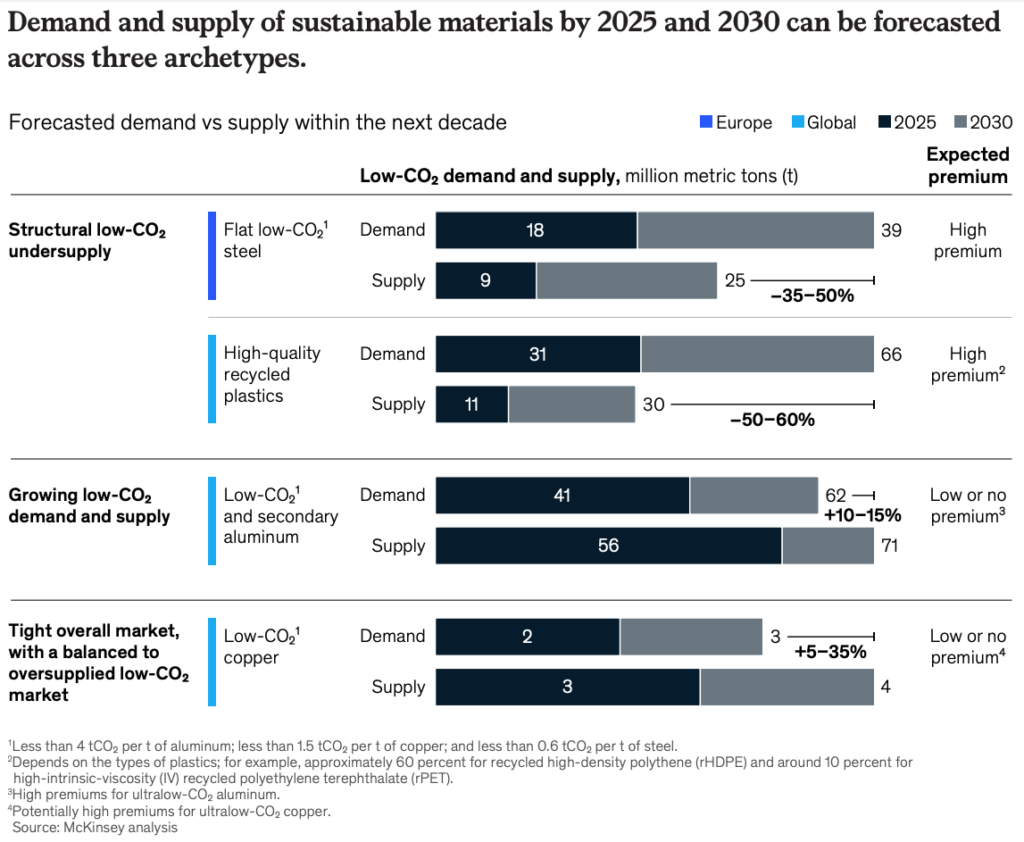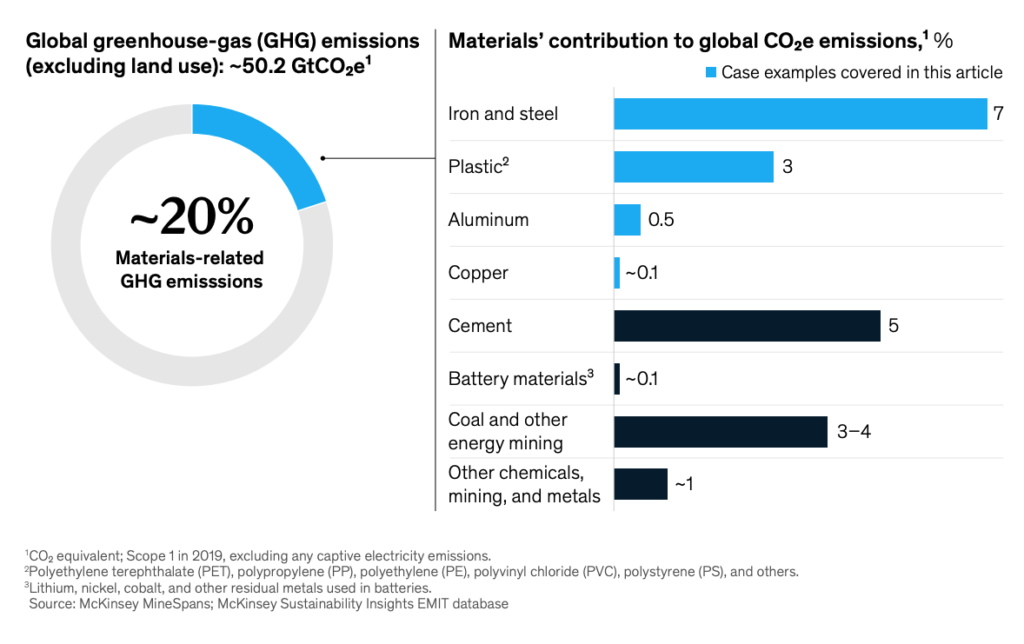How green material producers, buyers can capture the green premiums

At a time when industry leaders are under pressure to meet the climate targets that aim for net-zero GHG emissions by 2050, a recent report by McKinsey & Company outlines how green material producers and buyers can capture the green-premium value from sustainable materials.
According to the document, materials value chains—including metals and mining, building materials, plastics, and packaging—account for around 20% of global greenhouse gas emissions. This means that transforming these industries to make them compatible with sustainability targets will require increasing annual spending on physical assets across sectors by 60% from an estimated $5.7 trillion to $9.2 trillion.
“Materials producers should focus on operational decarbonization, including circularity, and building commercial capabilities to valorize their sustainable product offerings,” Michel Van Hoey, senior partner at McKinsey & Company, said in a media statement.
“In contrast, materials purchasers will need to build out the capabilities of their procurement teams to lower scope 3 emissions and secure sustainable supply early on, potentially through closed-loop agreements, and redesign for sustainability.”
In Hoey’s view and that of his co-authors on the report, producers and buyers of some of the materials currently making the highest contributions to GHG emissions – steel, plastics, aluminum, and copper – should be looking into strategies to capture the green-premium value.

Steel, aluminum, copper, plastics
In the case of steel, the dossier mentions that the European market for low-CO2 flat steel is expected to remain undersupplied until 2030 because of the rapidly growing demand for low-carbon steel and long lead times to bring low-carbon steel-producing assets online, leading to significant premiums from 2025 to 2030.
When it comes to aluminum, both the demand and supply of low-CO2 aluminum are expected to grow significantly in the next decade. Supply growth is forecasted to be driven by growth in secondary volumes and primary aluminum smelters switching to renewable power supply, while demand growth will be mainly driven by automotive and packaging demand in Europe and China.
“The global supply-demand balance for low carbon aluminum is expected to stay balanced by 2030, leading to overall limited premiums,” the report reads. “That said, we might observe regional imbalances, and we do expect that ultralow-CO2 aluminum, requiring technology changes, will be undersupplied by 2030, leading to significantly higher premiums.”

Looking into the low-CO2 copper market, on the other hand, McKinsey expects it to be balanced or potentially oversupplied by 2030, leading to marginal premiums. However, the consultancy believes there are more opportunities for premiums for ultralow-CO2 copper and selected subsegments.
Overall, McKinsey expects demand growth to outpace supply through 2030, driven by an increasing need for copper in modern applications, such as batteries and energy infrastructure, and by a slow project development pipeline.
Finally, the plastics industry is forecasted to see an imbalance between supply and demand for high-quality recycled plastics because, despite the expected growth in the supply of high-quality recycled plastics, it is still expected to lag significantly behind demand from applications such as packaging, consumer electronics, and automotive by 2030. This situation, thus, is likely to lead to sustained high premiums.
“Materials producers leaders should begin their journeys toward capturing green premiums by baselining their Scope 1, 2, and 3 emissions, developing decarbonization plans, understanding how they are positioned versus competing offerings, introducing low-carbon offerings, and building out their commercial capabilities accordingly,” McKinsey & Company partner Anna Moore said.
{{ commodity.name }}
{{ post.title }}
{{ post.date }}



Comments